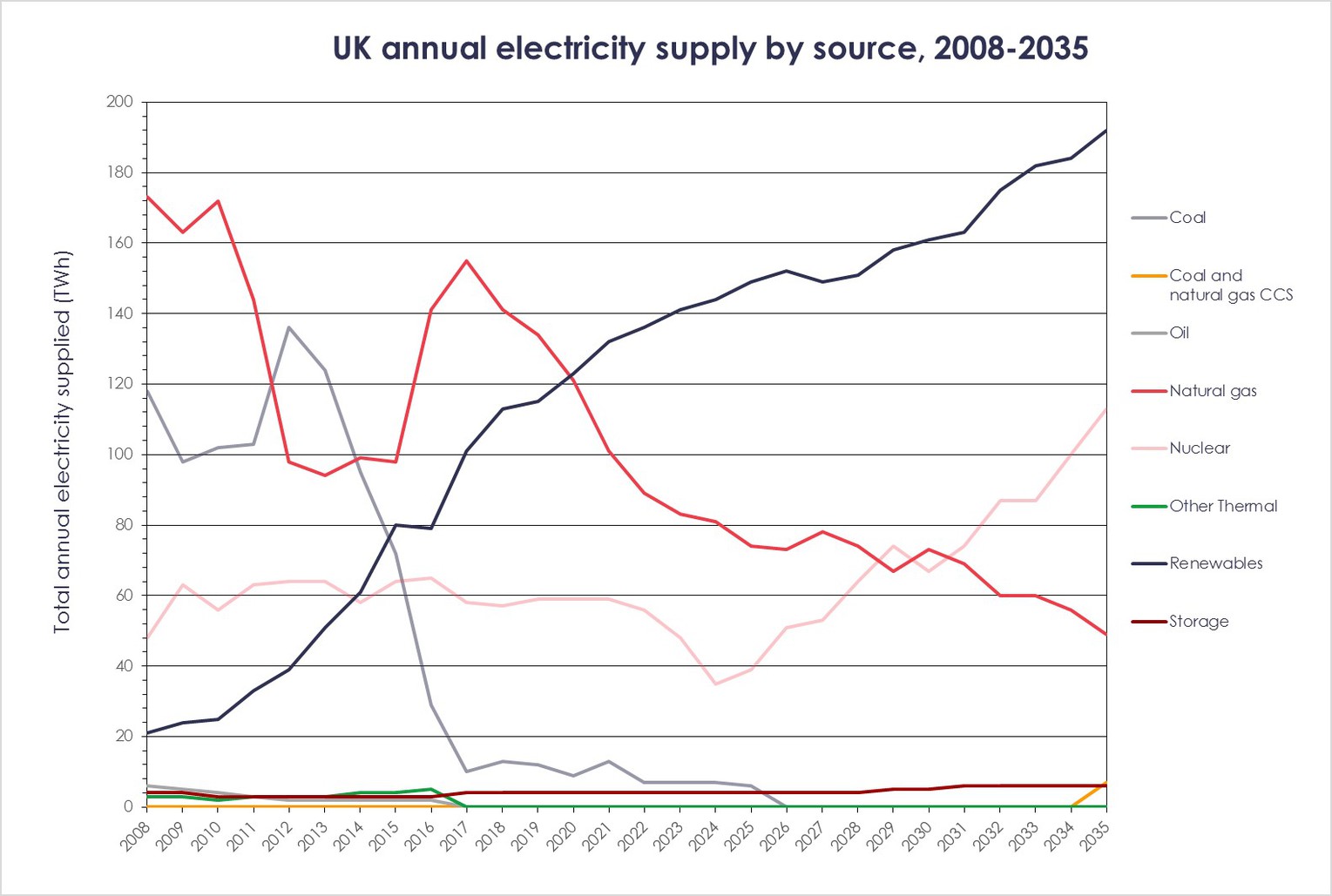New projections confirm Clean Growth Strategy cannot currently achieve Carbon Budgets
The UK Government has this week released new projections which confirm that its Clean Growth Strategy cannot currently achieve the Fourth and Fifth Carbon Budgets through reductions in domestic annual emissions of greenhouse gases between 2023 and 2032.
The new projections, published on 2 January, shows on page 19 that the UK’s cumulative emissions during the five years between 2023 and 2027 are expected to be 2014 million tonnes of carbon-dioxide-equivalent, even when proposal and policies outlined in the Strategy are taken into account. This is 64 million tonnes more than the Fourth Carbon Budget that Parliament has set for this period.
Emissions between 2028 and 2032 will be 1841 million tonnes of carbon dioxide equivalent, 116 million tonnes above the Fifth Carbon Budget of 1725 million tonnes.
The publication of the Strategy on 12 October 2017 was intended to fulfil the Government’s statutory responsibility, created by the Climate Change Act in 2008, which states: “As soon as is reasonably practicable after making an order setting the carbon budget for a budgetary period, the Secretary of State must lay before Parliament a report setting out proposals and policies for meeting the carbon budgets for the current and future budgetary periods up to and including that period”.
The Fourth and Fifth Carbon Budgets were approved by Parliament in 2011 and 2016, respectively.
The Climate Change Act allows the UK to meet its carbon budgets by transferring emissions between periods, or purchasing international carbon credits, if emissions reductions during a specific period are inadequate.
The Strategy states on page 40: “While we have the option to use flexibilities to fully meet our carbon budgets, the ambitious policies and proposals set out in this Strategy, and the rapid progress and accelerating pace of changes in low carbon technologies so far, suggest that we may not need to use this option. We will decide whether to use flexibilities following consultation with the Devolved Administrations, and having obtained and taken into account advice from the Committee on Climate Change.”
The UK has already comfortably achieved the First (2008-12) and Second (2013-17) Carbon Budgets, and the Strategy suggests that the Third Carbon Budget (2018-2022) will also be met through current policies.
Provisional estimates of the UK emissions of greenhouse gases in 2016 indicate that they were 42 per cent lower than in 1990. The Climate Change Act sets a target for the UK to reduce its annual emissions by at least 80 per cent by 2050 compared with 1990.
As the Strategy correctly points out, the power sector has been the main source of emissions reductions that have occurred so far. Emissions of carbon dioxide from electricity generation decreased by 62 per cent between 1990 and 2016, while final consumption of electricity, according to provisional estimates, increased by about 13 per cent.
The amount of coal used for electricity generation declined by 85 per cent between 1990 and 2016, with a growth in natural gas and renewables.
The projections confirm the Strategy’s estimates that the capacity of low-carbon sources, renewables and nuclear, will continue to grow and, in the reference scenario, will provide about 80 per cent of electricity supplied in 2032, the final year of the Fifth Carbon Budget period.
However, an analysis carried out by the Grantham Research Institute on Climate Change and the Environment and the ESRC Centre for Climate Change Economics and Policy raises questions about how the projected (reference scenario) increase in the amount of electricity supplied by renewables, of 79 terawatt-hours in 2016 to 149 terawatt-hours in 2025 and 175 terawatt-hours in 2032 (see figure), will be achieved.

The analysis calculates that contracts already exist, through the two auction rounds of Contracts for Difference and the Final Investment Decision Enabling for Renewables, to generate an additional 37 terawatts-hours annually from renewables before 2025, which is significantly short of the rise assumed by that date in the latest Government projections.
Her Majesty’s Treasury confirmed in the Autumn Budget on 22 November that an additional £557 million (in 2012 prices) would be available to support further contracts for low-carbon electricity generation, with a third auction of Contracts for Difference scheduled for Spring 2019. However, no further money would be made available before 2025.
The Autumn Budget also indicated that there would be no increase before 2025 in the current total carbon price of about £24.50 per tonne of carbon-dioxide-equivalent, consisting of the market price in the European Union Emissions Trading System together with the Carbon Price Support Rate.
The analysis points out that this is significantly outside the range of carbon pricing, US$40–80 (£31–62) per tonne of carbon-dioxide-equivalent by 2020, that the High-Level Commission on Carbon Prices, co-chaired by Joseph Stiglitz and Nicholas Stern, concluded would be consistent with meeting the goals of the Paris Agreement.
However, the analysis also praised the Government for acknowledging the potential contribution that the low-carbon transition can make to the UK’s economic growth.
Bob Ward is policy and communications director at the Grantham Research Institute on Climate Change and the Environment and the ESRC Centre for Climate Change Economics and Policy at the London School of Economics and Political Science. The views expressed in this commentary are those of the author and not necessarily those of the Grantham Research Institute.

